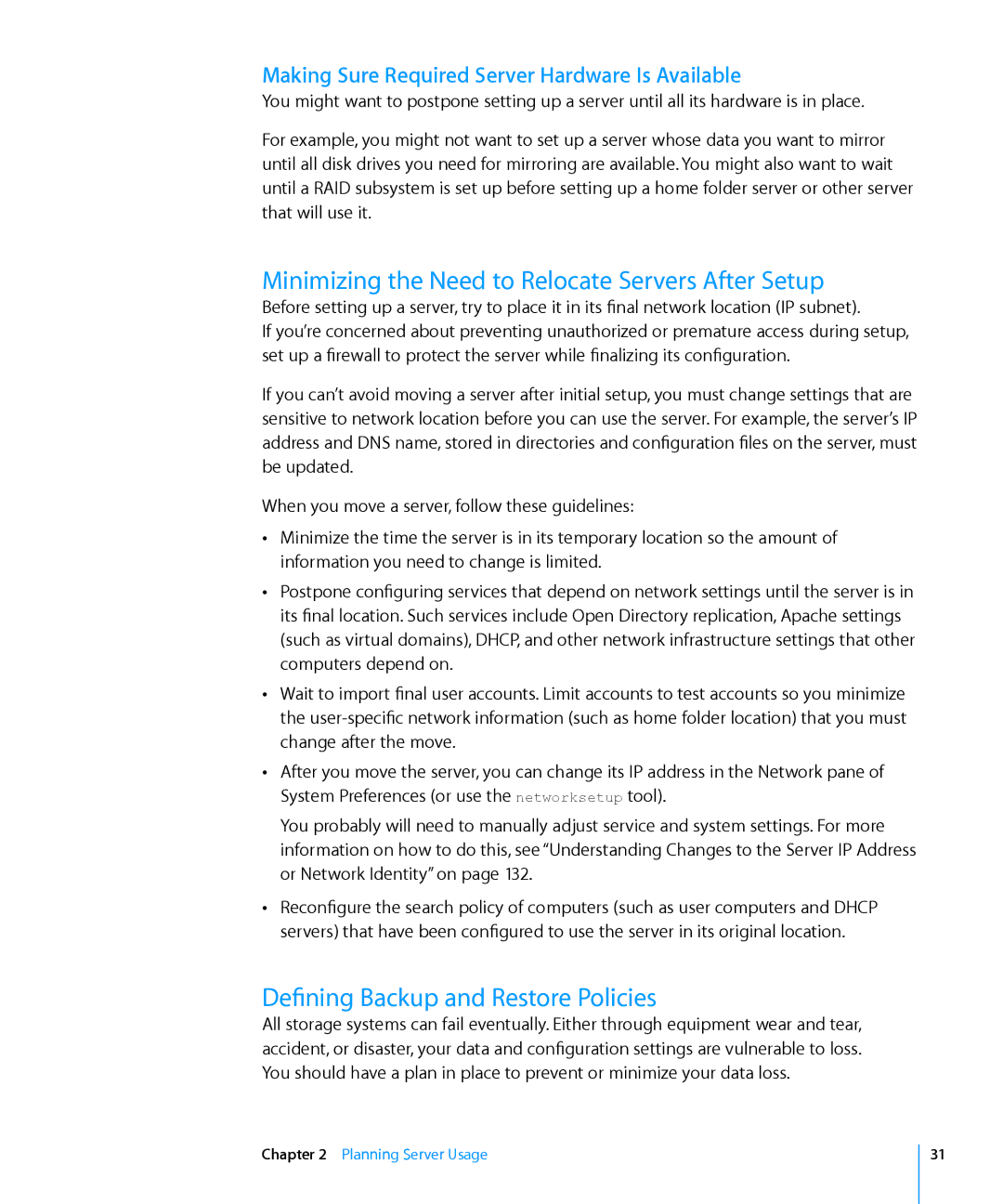Making Sure Required Server Hardware Is Available
You might want to postpone setting up a server until all its hardware is in place.
For example, you might not want to set up a server whose data you want to mirror until all disk drives you need for mirroring are available. You might also want to wait until a RAID subsystem is set up before setting up a home folder server or other server that will use it.
Minimizing the Need to Relocate Servers After Setup
Before setting up a server, try to place it in its final network location (IP subnet).
If you’re concerned about preventing unauthorized or premature access during setup, set up a firewall to protect the server while finalizing its configuration.
If you can’t avoid moving a server after initial setup, you must change settings that are sensitive to network location before you can use the server. For example, the server’s IP address and DNS name, stored in directories and configuration files on the server, must be updated.
When you move a server, follow these guidelines:
ÂÂ Minimize the time the server is in its temporary location so the amount of information you need to change is limited.
ÂÂ Postpone configuring services that depend on network settings until the server is in its final location. Such services include Open Directory replication, Apache settings (such as virtual domains), DHCP, and other network infrastructure settings that other computers depend on.
ÂÂ Wait to import final user accounts. Limit accounts to test accounts so you minimize the
ÂÂ After you move the server, you can change its IP address in the Network pane of System Preferences (or use the networksetup tool).
You probably will need to manually adjust service and system settings. For more information on how to do this, see “Understanding Changes to the Server IP Address or Network Identity” on page 132.
ÂÂ Reconfigure the search policy of computers (such as user computers and DHCP servers) that have been configured to use the server in its original location.
Defining Backup and Restore Policies
All storage systems can fail eventually. Either through equipment wear and tear, accident, or disaster, your data and configuration settings are vulnerable to loss. You should have a plan in place to prevent or minimize your data loss.
Chapter 2 Planning Server Usage
31
